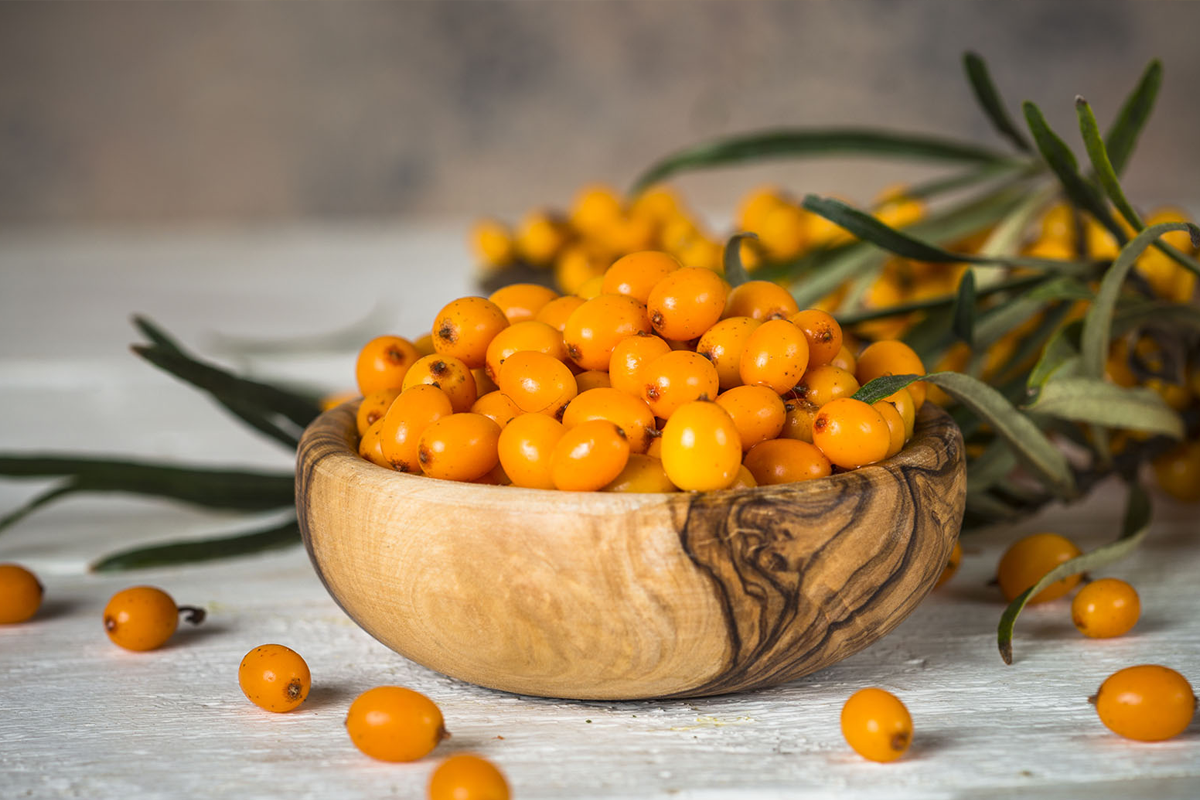
All About Sea Buckthorn: Uses and Benefits
Sep 13 , 2021
What is Sea Buckthorn?
Sea buckthorn is a rare plant that grows small, tart, yellow-orange berries, native only to Asia and Europe. The two types of oil derived from the sea buckthorn plant come from the berries and the seeds found inside them. The small dark seeds are the source of the seed oil, which is yellow or pale orange. The fruit oil comes from the pulp of the berries and is a dark red or red orange color.
The History of Sea Buckthorn
The sea buckthorn plant has a lengthy history of use in medicine across the world, dating back thousands of years. Throughout history various cultures have used its leaves, flowers, and fruits in many products, in multiple forms, and in a variety of industries. For example, the ancient Greeks used it to treat a plethora of various health issues. Communities in Tibet, Russia, Mongolia, and China would commonly use it to help treat arthritis, gastrointestinal ulcers, gout, and skin rashes caused by infectious diseases as well.
Sea Buckthorn Benefits
Sea buckthorn has an impressive nutritional profile. It contains more than 190 nutrients and phytonutrients, including more vitamin C than an orange. It also contains high amounts of vitamins and minerals, fiber, and protein, making it a powerful super food. Additionally, its berries have as much vitamin E as wheat germ, and three times more vitamin A than carrots. To top it off, it’s also the only known plant source on the planet that contains omegas 3, 6, 9 and 7.
However, there is a difference between the fatty acid makeup of seed oil versus berry oil. The major fatty acids contained in the seed oil are omegas 3 and 6, while the fruit’s oil contains more monounsaturated fatty acids and omega 7. Topical application of sea buckthorn brings significant benefits when using it to treat skin conditions. It aids in skin hydration, elasticity, and regeneration. This makes it ideal for managing the symptoms of rosacea, eczema, and other chronic inflammatory skin conditions.
However, there is a difference between the fatty acid makeup of seed oil versus berry oil. The major fatty acids contained in the seed oil are omegas 3 and 6, while the fruit’s oil contains more monounsaturated fatty acids and omega 7. Topical application of sea buckthorn brings significant benefits when using it to treat skin conditions. It aids in skin hydration, elasticity, and regeneration. This makes it ideal for managing the symptoms of rosacea, eczema, and other chronic inflammatory skin conditions.
Uses of Sea Buckthorn
- Today, sea buckthorn is popular for its healing and rejuvenating effects on the skin. And, when used topically, it’s a great natural cleanser and exfoliant.
- It can also help heal burns, cuts, wounds, sunburns, rashes, and other types of skin damage.
- On top of its moisturizing benefits, the fruit and seeds of the sea buckthorn are also powerful antioxidants. They have a plethora of skin health benefits associated with them, as well as anti-inflammatory properties.
- The sea buckthorn’s leaves are an outstanding source of vitamins, antioxidants, amino acids, and fatty acids; and because of this, brewing them in tea can improve blood pressure, lower cholesterol, and bolster your immune system.
- Many use sea buckthorn as an expectorant for loosening phlegm, assisting with high cholesterol, and as a powerful antioxidant.
- Thanks to its high levels of vitamins C, A, and E, beta-carotene, amino acids, and fatty acids, it can also aid in treating night blindness and dry eye.
Application
Typically, sea buckthorn is applied directly onto the skin in the form of berry concentrate, or berry and seed oil. Seed oil is extracted from small dark seeds, while fruit oil comes from the pulp. This application method is useful for treating sunburns and minor wounds, such as bedsores, burns, and cuts. Direct skin application is also effective for helping with dry skin, eczema, and even skin discoloration after giving birth. For this reason, oil and concentrate are used in many cosmetics and anti-aging products.
Ingestion
Sea Buckthorn berries are about one-third the size of a blueberry, and are known for being quite tart. However, their taste can vary. This is because some varieties of the sea buckthorn produce tart berries, while others produce larger, sweeter berries. For this reason, they’re used more in jelly, juice, puree, and sauce recipes.
Extraction
Extracting sea buckthorn oil is a difficult and delicate process, and it determines the quality of the end product. There are a lot of different methods of extraction, but the most common are cold-press and supercritical CO2 extraction. Each method comes with its own set of advantages and disadvantages. However, most experts recommend the supercritical CO2 extraction, as it preserves the highest amount of positive attributes of the oils’ impressive nutrient profile.
